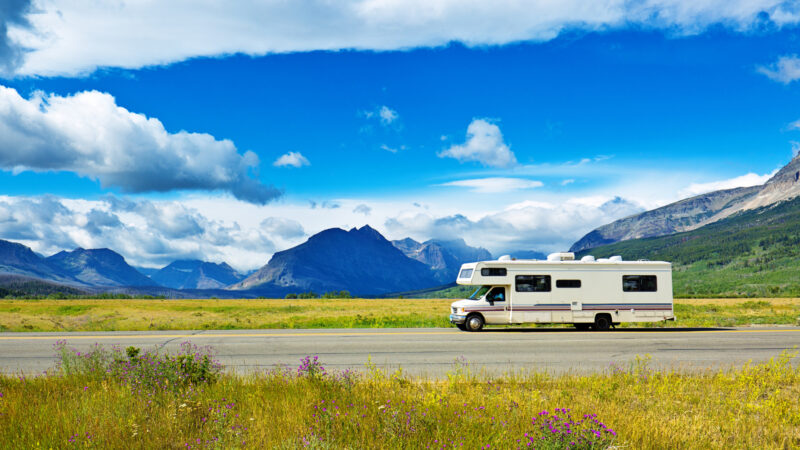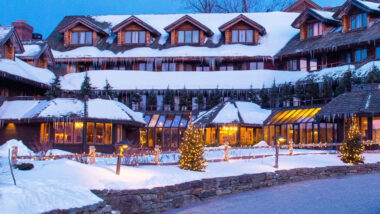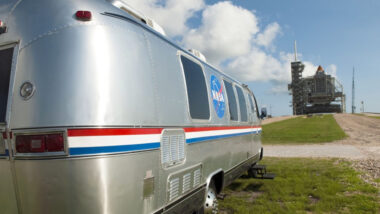Table of Contents Show
When visiting national parks, staying within the park boundaries in an RV is not always possible.
Sometimes it’s because of length, height, or weight restrictions on roads within the park. Other times it’s because there are no campgrounds within the national park.
But when you find a campground where you can park your RV and stay for a few days, it’s like you’ve hit the jackpot! There’s something about staying at a national park that adds to the experience.
So let’s take a look at seven national parks you can visit in an RV to start a road trip!
What Is the Best RV for National Parks?
The best RV for a national park is the RV that gets you there. Don’t avoid visiting a national park just because you have a 45-foot toy hauler and can’t stay within the park limits.
Stay outside the park, even if it’s an hour’s drive or more. Don’t miss out on the beauty and history of these treasures just because you have a big rig.
However, if you want the ease of convenience and prefer staying inside national park boundaries, a small trailer or Class B van will be your best option. If you’re looking to rent an RV for a road trip, take a look at the size requirements for the parks you’re visiting. Choose your RV accordingly.
But it’s not only the size of the RV to consider. The off-grid capabilities are also essential. Many campgrounds in national parks don’t offer hook-ups, and if they do, they’re only partial hook-ups.
Your RV needs to be able to provide you with the necessary power and water for a comfortable stay without the aid of hook-ups.
Because most national parks are off the beaten path, expect to drive away from conveniences like grocery stores and fuel stations. Have your RV packed and vehicle prepared to not have access to these things during your stay.
What Size RV Is Too Big for National Parks?
This is going to vary from park to park. However, in general, big rigs aren’t going to find many campsites that can accommodate them.
Small Airstream travel trailers or Mercedes-Benz Sprinter camper vans won’t have any problem. You have to do your research to find out the restrictions on each campground.
For example, in Acadia National Park, Blackwoods Campground doesn’t allow RVs over 35 feet long. But Trailer Village at the Grand Canyon permits vehicles up to 50 feet long and provides full hookups. So it’s very important to research each campground for the length and height restrictions.
If you’re planning on driving through the national park in your RV, it’s also important to read up on the routes through the park. You’ll want to know where you can safely and easily park.
You’ll also have to know if there are low-clearance bridges or bridges with weight restrictions you need to avoid. Many National Parks also have tunnels or narrow stretches where RVs of certain sizes aren’t permitted.

National Parks You Can Visit in an RV
Below are a few of the national parks you can visit in an RV. Due to tunnels and bridges, driving through the park itself may not be advisable.
However, campgrounds are available where you can book an RV site if your rig meets the size requirements.
Everglades National Park, Florida
Number of Campgrounds in the Park: 2
Total Sites: 382 (Not all RV sites)
Max RV Length Allowed: 35 feet
The Flamingo Campground and Long Pine Key Campground are the only two established campgrounds in Everglades National Park. They offer both RV and tent sites for visitors.
The Flamingo Campground has 42 electric-only sites, while all other sites offer no hook-ups. Potable water, dump stations, and showers are on-site. Unlike many national parks, there is cell phone reception in both of these campgrounds.

Grand Canyon National Park, Arizona
Number of Campgrounds in the Park: 4
Total Sites: 586 (not all RV sites)
Max RV Length Allowed: 30 feet to 50 feet
The Desert Rim Campground and North Rim Campground are only open seasonally, while Mather Campground and Trailer Village are open year-round. Trailer Village is the only campground with full hook-ups and sites that can accommodate RVs up to 50 feet in length.
You can make reservations 13 months in advance for Trailer Village. The max length for Mather Campground is 30 feet, the Desert View Campground is 30 feet, and the North Rim Campground is 40 feet. Reservations can be made up to six months in advance for these dry camping campgrounds.
Yellowstone National Park, Wyoming
Number of Campgrounds in the Park: 12
Total Sites: over 2,000
Max RV Length Allowed: 25 feet to 95 feet
Fishing Bridge RV Park is the only campground in Yellowstone that offers full hookups. Generators are allowed at seven of the campgrounds during certain times of the day. Restrooms – either vault toilets or flush toilets – are at every campground.
However, showers are only at three. RVs over 40 feet long will find large sites at Fishing Bridge RV Park, Bridge Bay Campground, Madison Campground, Grant Village Campground, and Norris Campground.
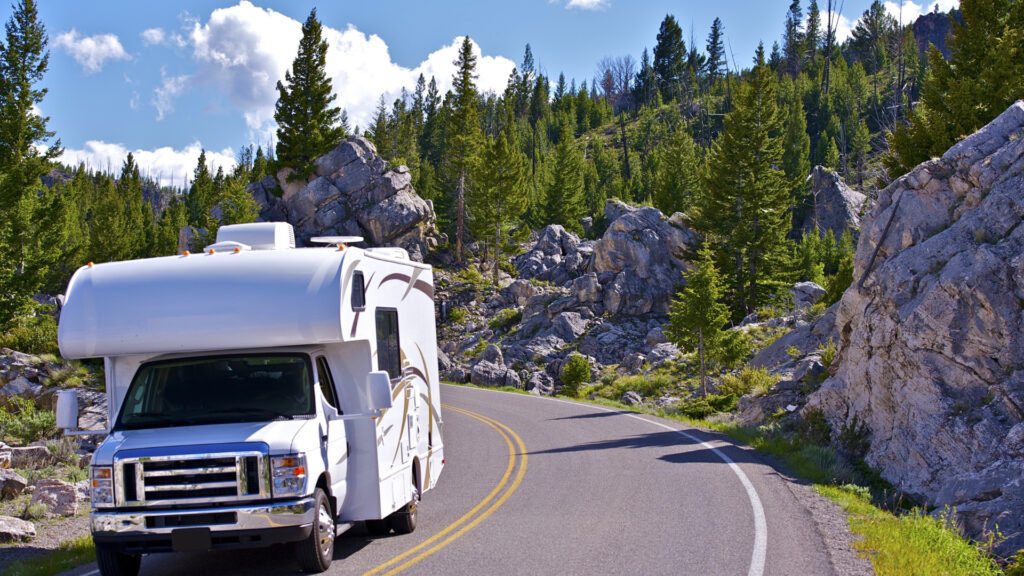
Hot Springs National Park, Arkansas
Number of Campgrounds in the Park: 1
Total Sites: 40
Max RV Length Allowed: 60 feet
Gulpha Gorge Campground is the only campground in Hot Springs National Park. It offers full hook-ups, and each site has a picnic table and grill.
There’s cell phone reception here since Hot Springs is an urban national park. Nightly fees are $34, and reservations can be made on Recreation.gov up to six months in advance.
Arches National Park, Utah
Number of Campgrounds in the Park: 1
Total Sites: 51
Max RV Length Allowed: 40 feet
Devils Garden Campground is the only campground in Arches National Park. Between November and February, campsites are first-come, first-served, but you must make reservations from March to October.
The campground is usually packed every night during the busy season, so making your reservation as soon as the six-month booking window opens is highly recommended.
There’s no cell service or internet connectivity at Devils Garden. There’s also no potable water, laundry, and no dump station. It’s a very remote area, with the nearest place to get food, gas, and supplies 45-60 minutes away in Moab.
Death Valley National Park, California
Number of Campgrounds in the Park: 6
Total Sites: 711 (Not all RV sites)
Max RV Length Allowed: 25 feet to 100 feet
Only a few campgrounds are open in the summer due to the extreme heat in Death Valley. Furnace Creek Campground is the only campground that accepts reservations and has sites with full hookups.
Advanced reservations are highly recommended when the six-month booking window opens. The other five national park-managed campgrounds have no hookups.
There are also three private campgrounds within the boundaries of Death Valley National Park. Stovepipe Wells Village offers 14 full hook-up RV sites, and Panamint Springs Resort offers six full hookup sites and 26 dry sites. Additionally, the Oasis at Death Valley’s Fiddlers’ Campground offers dry camping only.
Keep in Mind: Next time you’re in Death Valley with your RV, you have to do these 10 Remarkable Things In Death Valley!
Acadia National Park, Maine
Number of Campgrounds in the Park: 3
Total Sites: 572 (Not all RV sites)
Max RV Length Allowed: 20 feet to 60 feet
Unlike many of the other national park campgrounds, the campgrounds at Acadia accept reservations on a 60-day rolling basis. These three campgrounds aren’t open during winter, even though the park remains open year-round.
Cell service is very unreliable at Acadia National Park. The 20-foot maximum length at Seawall Campground is due to a tight turn within the park.
They may turn away RVs over the limit. Both Blackwoods Campground and Seawall Campground are dry camping sites. Schoodic Woods Campground offers electricity, water, and electric-only RV sites. There are also sites that can accommodate big rigs up to 60 feet long.
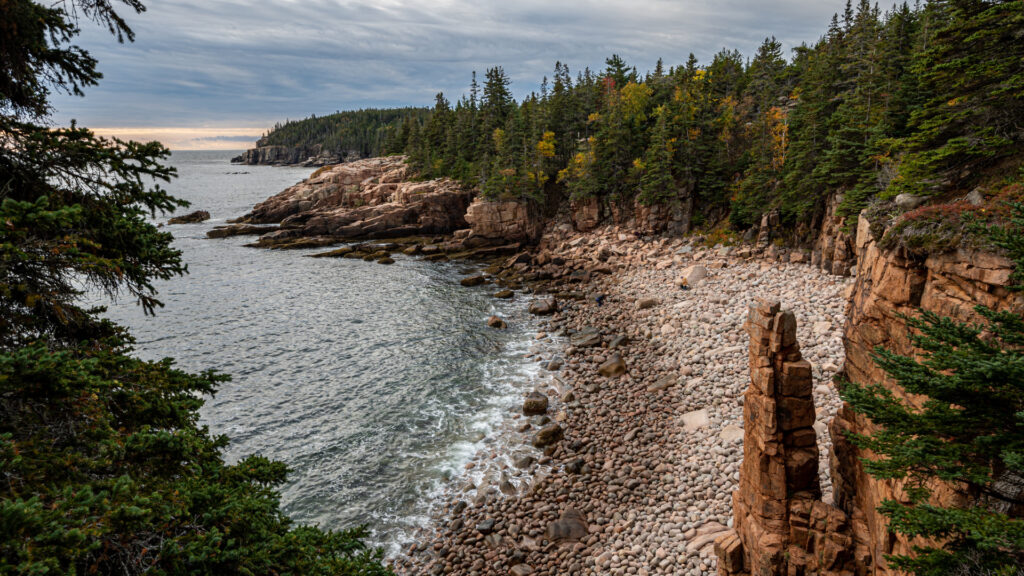
Other Considerations When Booking an RV Site at a National Park
Some national parks you can travel through in an RV and not stay the night, like Petrified Forest National Park.
Other parks, you’ll want to park and enjoy the scenery and history for at least a few days. When booking an RV site at a national park, here are a few things to keep in mind.
Double Check Length Limits With the Park Directly
Many campgrounds list length limits and height restrictions on their websites or Recreation.gov. However, if you have any doubts, it’s always a good idea to call the campground directly to ensure you can get in and out of the location.
If you own a larger Class A or a 40-foot fifth wheel, you don’t want to arrive just to find out that you can’t even make it passed the guard house.
Book As Early as Possible
Campgrounds within national parks fill up quickly. Stay on top of booking windows so you can get online or make that phone call the day your booking window opens.
Many campgrounds have a six-month rolling window, but that’s not true for them all. If you want to make a last-minute visit, you might find availability because someone has canceled, but it won’t be likely.
You Most Likely Won’t Have Cell Service
National parks are protected areas of land that are generally not close to cities with cell towers. Your campground may be tucked away in a dense forest or high on a mountain.
Not only will you probably not have cell service, but if you’re counting on Starlink for internet connectivity, you might also have a problem if the trees cover the campground.
Download the offline capabilities for the apps you need. You can also write down directions before arriving because you’ll likely be unable to use apps or make phone calls.
Keep in Mind: Should you get Starlink for your RV? Here’s What RVers Really Think About Starlink!
This Is Just a Start to RV-Friendly National Parks
It’s time to get that road trip planned! Whether you want to stay along the east coast or head to the canyonlands of the west, national parks are ready to accommodate you.
The sooner you start planning, the better your chances of booking a campsite at these parks. So do your research, contact the campgrounds directly, and get those reservations booked so you can make memories that will last a lifetime.
Which national park will you visit first in your RV?




